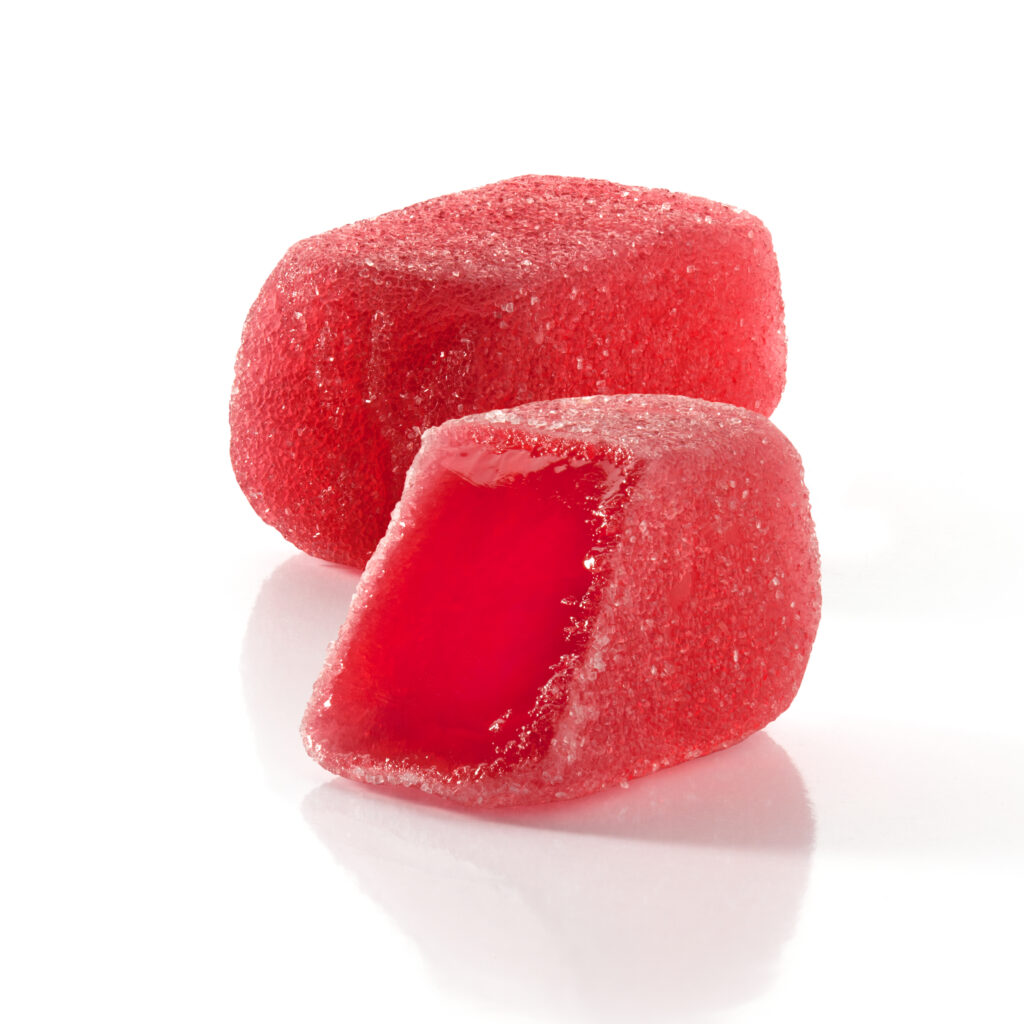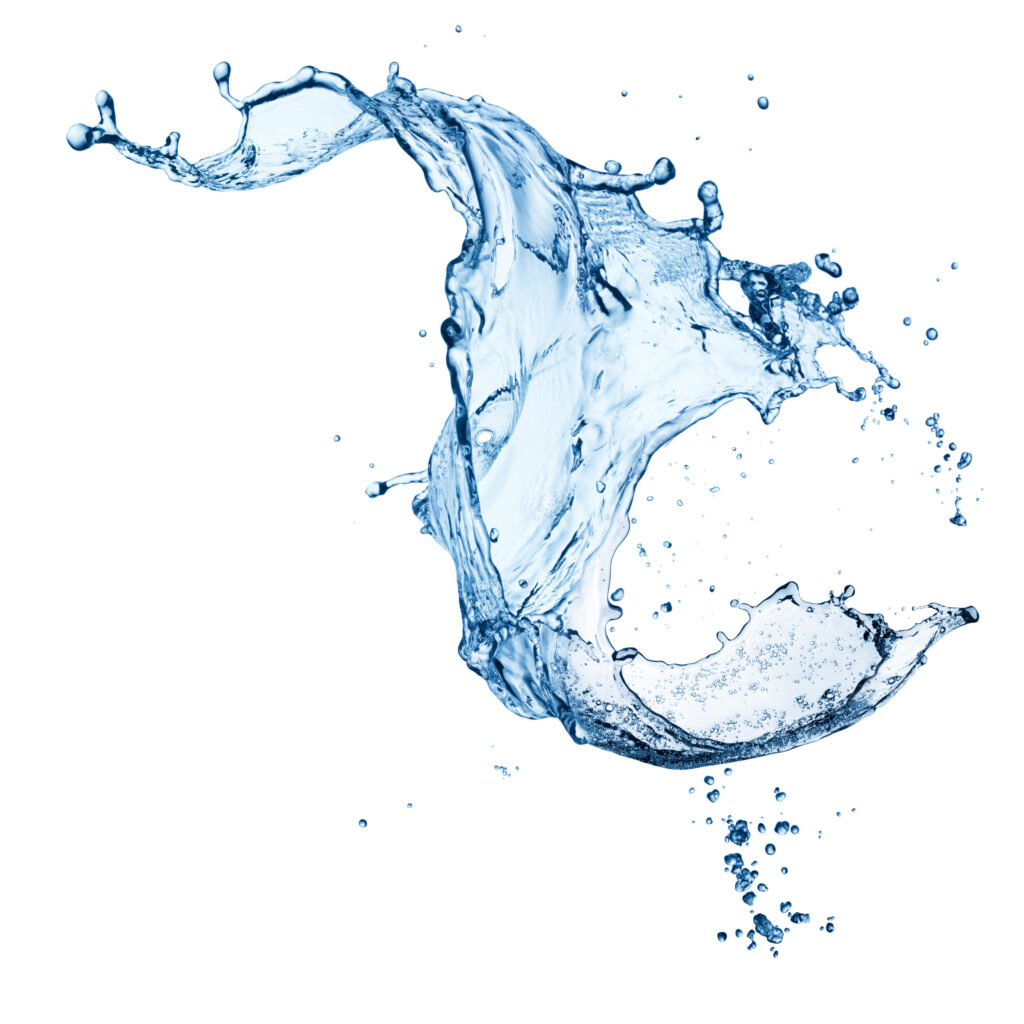All about alginate
READ ALL ABOUT CARRAGEENAN IN THE NEXT CHAPTER
Alginate
6 TYPES OF ALGINATE
- Alginic Acid (E400)
- Sodium Alginate (E401)
- Potassium Alginate (E402)
- Ammonium Alginate (E403)
- Calcium Alginate (E404)
- Propylen Glycol Alginate (E405)
EUROGUM produces Sodium Alginate (E401) and Calcium Alginate (E404).
Each type of alginate originates from the same type of algae, but it is the extraction process that results in different types of alginate.
SODIUM & CALCIUM ALGINATES ARE COMMONLY USED IN FOOD PRODUCTS.
Sodium alginate dissolves at ambient temperature and gels instantly when divalent ions such as calcium or magnesium are added to the solution. The gel is thermally irreversible, which is desirable in some applications. When monovalent ions are added to the sodium alginate solution, a gel is still formed, but the gel is soft, spreadable, and thermally reversible.
Calcium alginate is usually used in combination with other types of alginate or sequestrants. Depending on the conditions, it produces everything from a thixotropic liquid to a hard gel. The alginate dosage/use rate and water ratio determine the amount of liquid to be bound and the textural properties of the finished product.

ALGINATE DOES MUCH MORE THAN JUST BIND WATER
- Ensures thermal stability
- Gives a specific texture
- Increases sliceability
- Gives body to the application, e.g. as a fat replacer
- Improves flavour release
- Provides freeze/thaw stability
LEGISLATION
The alginate is derived from the genus of brown seaweeds known as Phaeophyceae. It is considered to be a texturising ingredient and can be used in quantum satis (in the required quantity) in food products worldwide.
It complies with FDA (Regulations 21 CFR 184.1724) and Food Chemicals Codex standards. We advise the food manufacturer using the product to ensure that it complies with local regulations in force, especially in the country where the finished product will be consumed.
It complies with EU Regulation 2012/231/EU, the Code of Federal Regulations and the Food Chemicals Codex standards. We advise that the food manufacturer using the product to ensure that this product complies with applicable local regulations, in particular in the country where the finished product will be consumed.
SOURCE
As described before, alginate is an extract from brown seaweed. The species of seaweed is one of the determining factors for the type and functionality of alginate.
Seaweed typically grow at a depth of about 8 metres in water and are harvested by hand and then dried.
PRODUCTION
Production varies according to the type of algae. We focus on the most important:
- Calcium Alginate
- Sodium Alginate
To obtain the alginate, the dried seaweed is washed, and the alginate is extracted using hot water and sodium carbonate. The alginate slurry is filtered to remove insoluble cellulose and other impurities. The cellulose + minerals obtained from the process + filter aids are typically used for fertilization in local areas. The hot alginate slurry contains a large amount of water. The water is usually removed by:
Calcium addition. The alginate precipitates as calcium alginate. The precipitated calcium alginate is filtered out of the water. The remaining water is evaporated with hot air. The dry material is then milled into calcium alginate powder.
When acid is added, the calcium alginate dissolves and becomes the alginic acid. When sodium carbonate is added to alginic acid, it is neutralised and becomes sodium alginate. The sodium alginate is filtered out of the slurry. The remaining water is evaporated using hot air. The resulting dry material is then milled into sodium alginate powder.
MOLECULE
As mentioned before, alginate is a polymer containing guloronic and mannuronic acids.
Lessonia has traditionally a high amount of guloronic acid and low amount of mannuronic acid (high G, low M). High gel strength – brittle gel
Laminaria has traditionally a low amount of guloronic acid and high amount of mannuronic acid (low G, high M). Low gel strength – elastic gel
Guloronic acid is a negatively charged (1-4) α -L-guleronate that interacts with positively charged ions. Divalent ions, such as calcium, bind the molecules together in a strong three-dimensional network. The α-connection between molecules orients the molecules into “mountains” and “valleys”. The calcium ion binds the ‘valley’ of one molecule to the ‘valley’ of another molecule, which causes gelation of the alginate.
Mannuronic acid is a negatively charged (1-4) β-D-mannuronate that interacts with other ions as well as guloronic acid, but to a much lesser extent. The β-linkage creates a more linear molecule with no ‘hills’ or ‘valleys’. This partly explains why the alginate type has soft and elastic gel properties.
It is very important to emphasise that Laminaria is not purely guloronic acid and Lessonia is not purely mannuronic acid. In both cases it is a combination of guloronic acid and mannuronic acid. The proportion and placement of these two acids varies depending on the age of the seaweed, the quality of the seaweed, and the harvesting area.

GELLING SALTS + SYNERGISTIC GUMS
The alginate cannot achieve its maximum functionality without gelling ions, known in practice as gelling salts. Some gelling salts are more effective than others, e.g. calcium is very effective in creating a strong thermally irreversible gel. Others, such as monovalent ions, promote the alginate to gel softer into a thermally reversible gel.
Usually, improved “gain” or “potentiation” is achieved when alginates are combined with other ingredients. This can be explained as a supporting effect. Explanation: Starch, guar gum and xanthan gum do not react chemically with the alginate molecule, but can optimise the distribution of the gel salt, allowing the alginate to gel more homogeneously, in a gelling jar.
The most important gelling ions in descending order are Ca++, Mg++, K+, Na+, H+
MAIN FUNCTIONALITY IN APPLICATIONS
The main function of alginate is to bind water. Subsequently, it may also have a secondary function to modify the texture of the gel according to specific requirements. All alginates are stable and easy to use in a wide range of applications:
- pH
- Salts
- Sugar
- Alcohol
- Temperatures
This makes alginate suitable for use in most common foods or other non-food products where water content needs to be controlled.

3 EXAMPLES
External setting: A solution of sodium alginate is prepared, e.g. with flavourings and colourings. How it works: The solution is treated directly with calcium. The alginate gels immediately. Application examples: Artificial caviar and co-extruded sausage casings.
Internal setting: The alginate is added to the food. The other raw materials in the food application contain the necessary ions and cause gelation of the alginate. Application examples: custard crème, jam, and fruit fillings.
Internal setting or a self-gelling system: sodium alginate is combined with a gelling salt and a gelling retardant. It is a balanced triangle consisting, for example, of sodium alginate, calcium sulphate, and phosphate. How it works: when the system is hydrated, the alginate dissolves. The alginate is then gelled with calcium ions, which are released from the calcium sulphate. The phosphate controls the rate of gelation. If the gelation rate is too fast, gelation will occur in the mixer and the mixer action will break up the gel formed. This is called pre-gelling. When the mixer is emptied, the solution is very viscous. This solution is a broken gel and cannot be ” re-gelled”. When the pH is lowered, calcium ions are released more quickly from the calcium sulphate. This speeds up the gelation time. In other words, the composition of the self-gelling system must be balanced for the specific application to optimise the performance in terms of the gel strength and gelling time. Application examples: fat emulsion, restructured meat and nuggets.
STANDARDISATION
EUROGUM standardises and mixes alginates to ensure and guarantee uniform product performance. Alginate is a natural product, and it is our expertise that allows us to consistently meet the specification without deviation. The performance of our products in your processes and finished products will remain consistent from batch to batch.
PRODUCT RANGE
The performance of alginate products depends, among other things, on:
- The type of algae
- Age of the algae
- Ionic composition
- Alginate viscosity
- Process in general
- Powder mesh size
- Additional gelling salts and sequestrants
- Addition of supporting gums
All these factors need to be taken into account when developing a new product. This product can be the result of matching an existing product or a new product developed from scratch.
EUROGUM specialises in the production of customised blends for all applications with short lead times to meet the requirements of all our customers.
